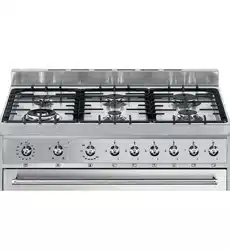
Contents
3
EN
1 Instructions 4
1.1 General safety instructions 4
1.2 Identification plate 5
1.3 Manufacturer liability 5
1.4 Appliance purpose 6
1.5 This user manual 6
1.6 How to read the user manual 6
2 Description 7
2.1 General Description 7
2.2 Cooktop 8
2.3 Control panel 8
2.4 Other parts 9
2.5 Available accessories 9
3 Use 11
3.1 Instructions 11
3.2 First use 12
3.3 Using the accessories 13
3.4 Using the cooktop 14
3.5 Using the oven 16
3.6 Cooking advice 18
3.7 Using the storage compartment 19
4 Cleaning and maintenance 21
4.1 Instructions 21
4.2 Cleaning the appliance 21
4.3 Removing the door 22
4.4 Cleaning the door glazing 23
4.5 Removing the internal glass panes 23
4.6 Extraordinary maintenance 25
5 Installation 27
5.1 Clearances above and around domestic appliances 27
5.2 Gas connection 28
5.3 Adaptation to different types of gas 31
5.4 Positioning 35
5.5 Electrical connection 41
5.6 For the installer 42
We advise you to read this manual carefully, which contains all the instructions for
maintaining the appliance's aesthetic and functional qualities.
For further information on the product: www.smeg.com or call 02 8667 4888
Loading ...
Loading ...
Loading ...
